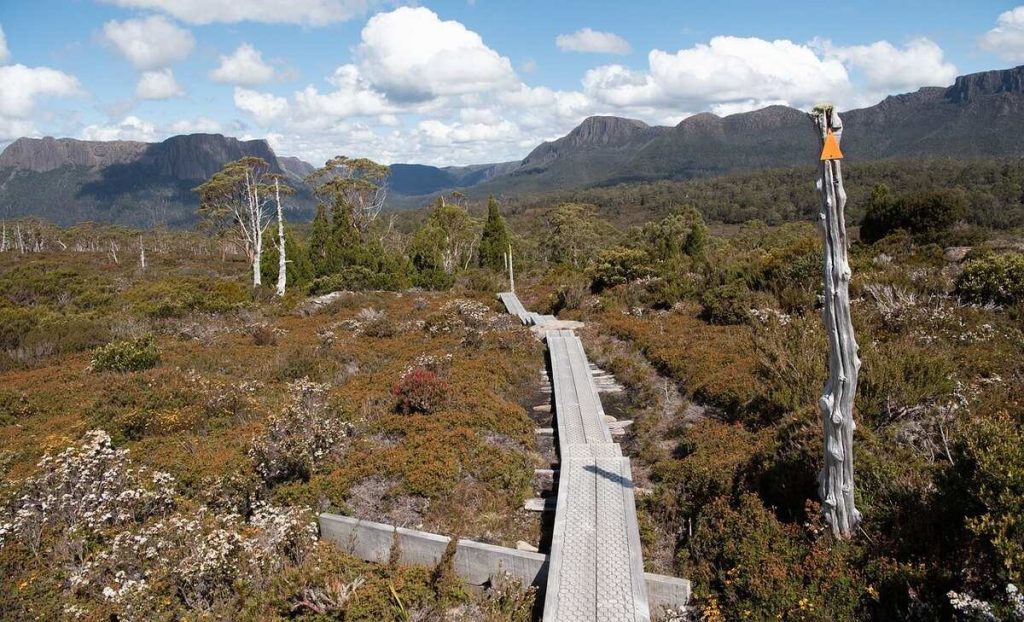I know you’re excited about hiking the Overland Track, and honestly, you should be—it’s one of the most epic adventures you’ll ever go on. But before you set off, I’ve got some insider tips to help you avoid some common mistakes. Trust me, it’s way better to learn from other people’s experiences than to have to deal with these issues yourself out there. So, here are the top 10 mistakes to avoid on the Overland Track and how you can have an awesome (and smooth) trek!
1. Underestimating the Weather
Tasmania’s weather is like a teenager—moody and unpredictable. One moment you’re basking in the sun, the next you’re fighting freezing rain. People often assume summer means warmth, but even in peak season, it can snow. The key? Layer up. Pack a good waterproof jacket, thermals, and never leave your rain gear behind, no matter how clear the skies are when you start. It’s better to have it and not need it than the other way around.
2. Overpacking Your Backpack
I get it—you want to be prepared for every possible situation. But here’s the thing: overpacking is one of the biggest regrets hikers have. Carrying a heavy load for 6-7 days will drain your energy fast. Bring only the essentials and focus on lightweight gear. Each gram adds up. I’d say lay out everything you think you need, then cut it down by a third.
3. Ignoring Footwear
This is one of those “don’t learn the hard way” tips: your boots will make or break your trip. Don’t, under any circumstances, hit the trail with new or untested boots. Make sure they’re well-worn, waterproof, and comfortable with your hiking socks. And pack a couple of spare socks too—wet feet are a recipe for blisters.
4. Not Training with a Loaded Backpack
Walking around your neighborhood or on a treadmill won’t prepare you for the Overland Track unless you’re carrying your pack. The trail is hilly, uneven, and at times downright challenging. Get used to hiking with the same weight you’ll be carrying on the track. A couple of weekend practice hikes with your loaded backpack will save you a lot of grief when you’re on day three and your shoulders are killing you.
5. Skipping the Side Trips
One mistake a lot of people make is just focusing on the main track and skipping the side trips. I know, by the time you reach a detour, you’re tired and want to keep moving, but some of the best views and experiences are just off the main path. Mount Ossa (Tasmania’s highest peak) is a must-do if the weather’s good. Don’t let tired legs hold you back from making memories that will last a lifetime.
6. Relying Too Much on the Huts
Yes, there are huts along the way where you can stay, but they’re first-come, first-served, and during peak season, they can fill up quickly. Always carry a tent and be prepared to camp if the huts are full. And even if you get a spot, they’re not exactly luxurious—think basic wooden platforms. Your tent might actually be more comfortable on some nights!
7. Bringing Too Much Food
Food is tricky. You want enough to keep you energized, but overpacking food adds a lot of weight. Aim for lightweight, high-energy meals like freeze-dried meals, nuts, and energy bars. Keep it simple. The more complex your meal prep, the more gear you’ll need to bring. And don’t forget to bring a little extra in case the hike takes longer than planned—but don’t go overboard.
8. Forgetting Navigation Tools
Even though the Overland Track is well-marked, you should still carry a map and compass (and know how to use them!). Your phone might not have reception, and GPS devices can fail. Plus, there are side trips and alternate routes where good navigation skills come in handy. Having a map isn’t just about avoiding getting lost; it’s about feeling more confident and safe along the journey.
9. Disrespecting the Environment
This one’s more of an ethical mistake. The Overland Track is a pristine, protected area, and it’s up to us as hikers to keep it that way. Follow the Leave No Trace principles: pack out all your rubbish, stay on the marked trails, and respect wildlife by keeping your distance. Nothing ruins a hike like finding someone else’s trash along the trail. Be part of the solution, not the problem!
10. Not Booking in Advance
Here’s something you don’t want to forget: from October to May, you need to book a spot on the Overland Track. There’s a fee, and it’s limited to a certain number of people per day to prevent overcrowding and to protect the environment. Don’t wait until the last minute to book, especially if you’re planning to hike during peak season. Also, double-check your ferry booking if you plan on using it at Lake St Clair.
Bonus Tip: Neglecting Self-Care
Last but not least, look after yourself on the trail. Blisters, dehydration, and muscle fatigue can creep up on you if you’re not careful. Hydrate often, rest when you need to, and take care of any hot spots on your feet before they turn into blisters. Trust me, a little self-care can prevent a small issue from turning into a trip-ruining problem.
So, there you go! If you avoid these mistakes, you’re already ahead of the game. The Overland Track is an incredible journey, but it’s also a serious physical and mental challenge. The more prepared you are, the better your experience will be. Have an amazing hike, and let me know all about it when you get back!
